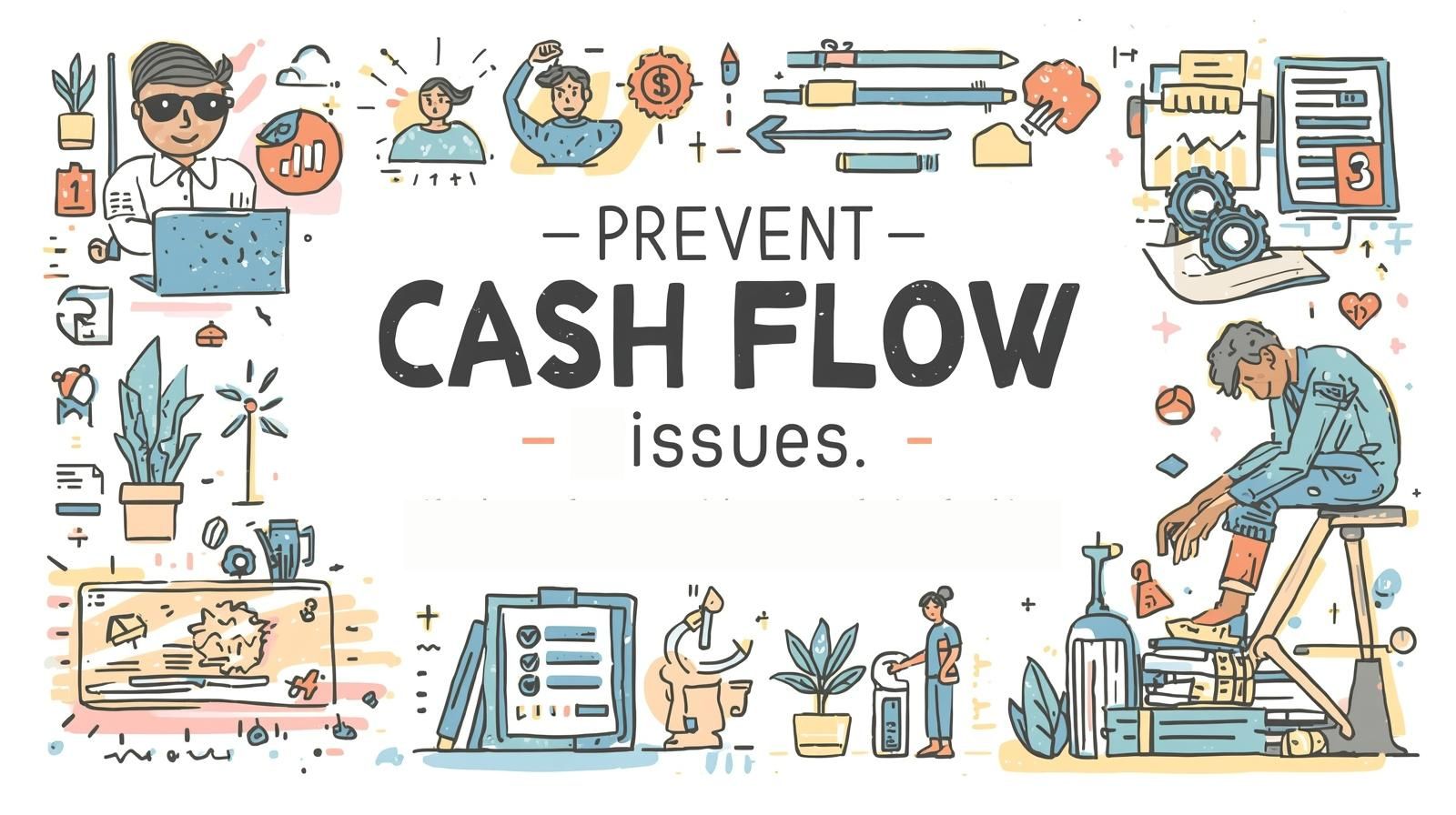7 Simple Ways to Stop Cash Flow Problems Before They Start

Cash flow is the heartbeat of every business. If money stops moving, your business stops too. For many small and medium enterprises (SMEs), cash flow problems are a common headache. You sell products or offer services, but the cash is not there when you need it. Why does this happen? Usually, it’s because money coming in is slower than money going out.
The good news is this: you can prevent cash flow issues before they start. In this post, we’ll share 7 simple ways to keep your cash flowing and your business running smoothly.
-
- Track Your Cash Daily
You can’t manage what you don’t measure. Start by tracking all the money coming in (sales and payments) and going out (expenses and salaries) every day. Use a simple spreadsheet or bookkeeping app, or hire a bookkeeper. When you track daily, you identify problems early and address them before they become significant.
Action Tip: Set a reminder every evening to record all your daily transactions - Send Invoices Immediately
Many SMEs delay sending invoices after delivering goods or services. This slows down your cash inflow. The earlier you send an invoice, the sooner you get paid.
Action Tip: Use invoicing software or even WhatsApp to send invoices the same day work is done. Include clear payment terms like “Payment due in 7 days.” - Follow Up on Late Payments
Some customers will not pay unless you remind them. Do not feel shy about asking for your money. Late payments can kill your cash flow.
Action Tip: Send a polite reminder 2 days before the due date and again on the due date. If payment is still not made, follow up every few days until cleared. - Set Clear Payment Terms
Never leave payment terms open-ended. If you tell customers, “Pay anytime,” they will take advantage of it. Define clear rules for payment.
Action Tip: Use terms like “50% upfront and 50% on delivery” or “Full payment within 7 days.” Add these terms to your invoices and contracts. - Build a Cash Reserve
What happens when business is slow or customers delay payment? If you have no savings, you’ll be stuck. A cash reserve acts like a safety net for your business.
Action Tip: Save at least 10% of every sale in a separate account. This will help you pay salaries, rent, and bills when sales are low. - Control Your Expenses
Cash flow problems don’t always come from low sales; sometimes, it’s because expenses are too high. Reduce unnecessary spending and buy only what your business truly needs.
Action Tip: Review your expenses every month. Cut things that are not urgent or do not bring income. For example, that extra office space or too many subscriptions. - Forecast Your Cash Flow
A simple forecast can save your business. This means planning your money for the next 3 to 6 months. When you know what’s coming, you can prepare.
Action Tip: List your expected income and expenses for the next few months. If you see a gap, plan early—either by cutting expenses or finding new income sources
- Track Your Cash Daily
Cash flow is life for SMEs. If you manage it well, your business will grow without stress. Start small: track your money daily, send invoices on time, follow up on payments, and save for the future. These simple steps can prevent cash flow issues before they start.
Do you need help setting up proper cash flow management for your business?
At Taisha Associates, we help SMEs create systems that keep money flowing and businesses growing. Contact us today for a free consultation!

Leave a Reply